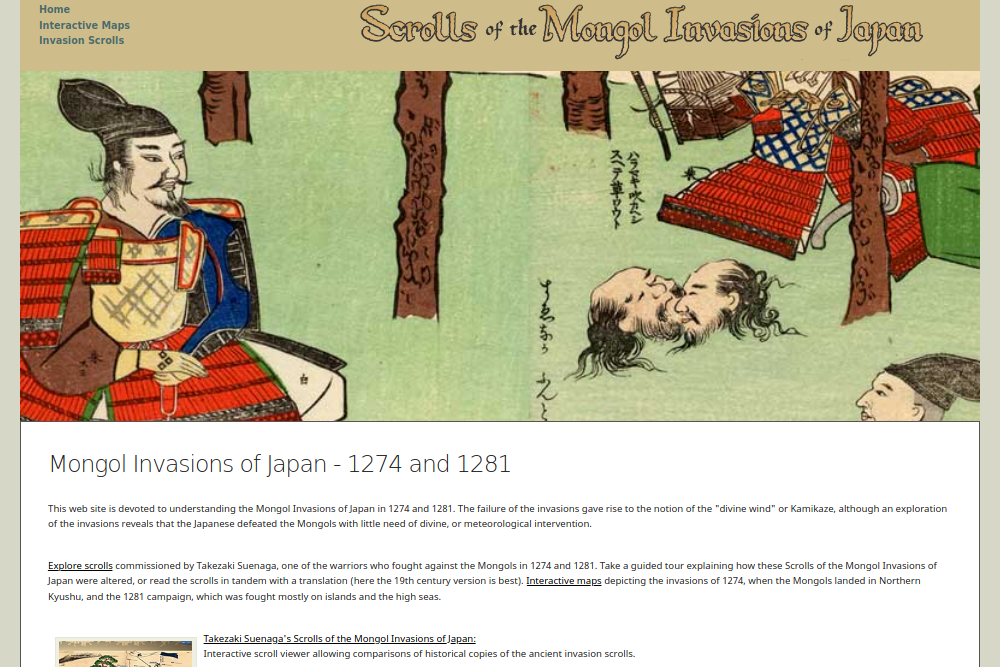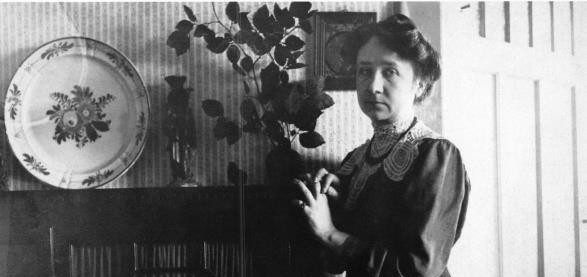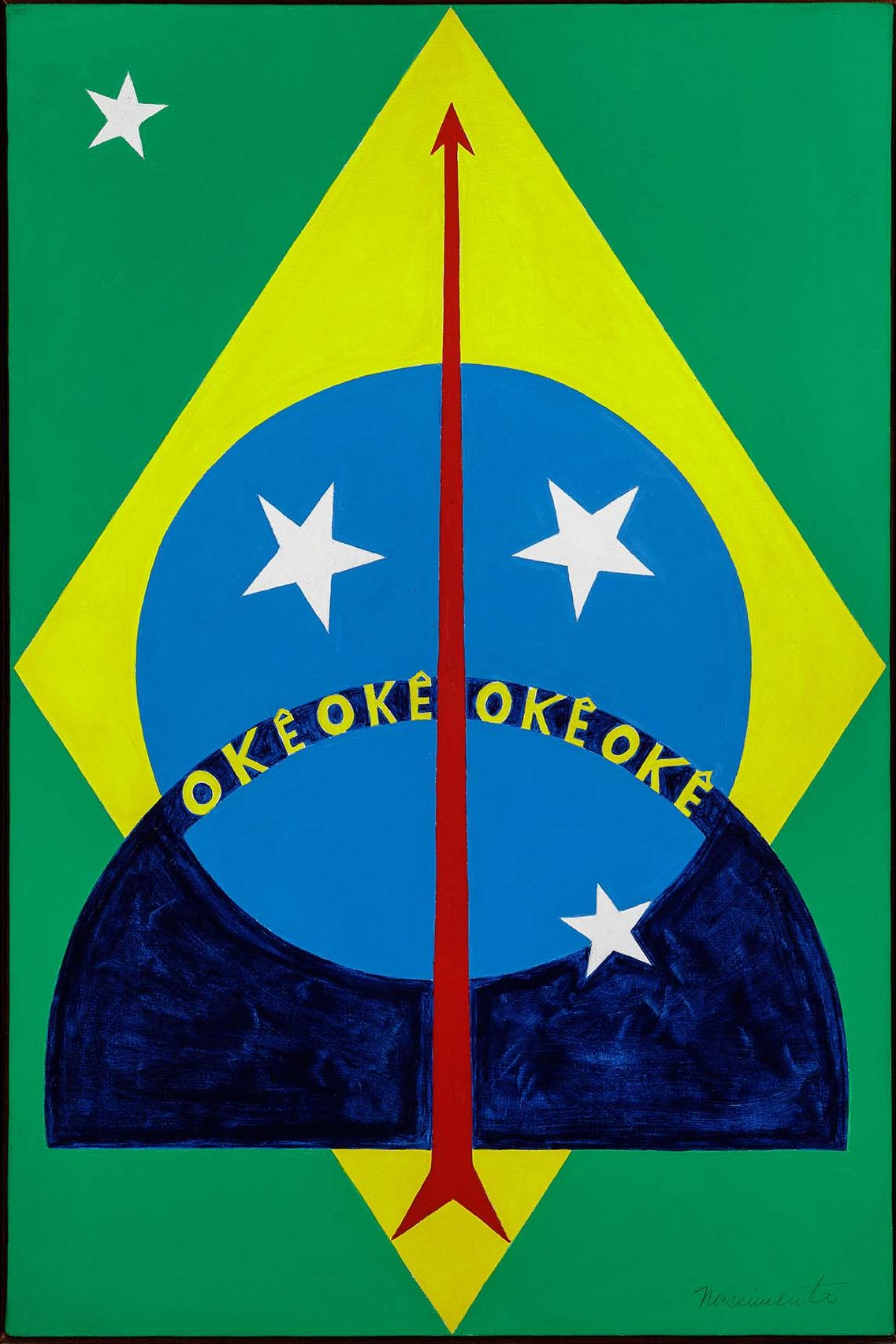Living Forms is the result of a semester-long exploration of site-specific dance work in Rebecca Lazier’s Site, Off-Site, Site-Responsive Dance and Choreography class as part of the Princeton Dance Festival: Reimagined 2020. This website is an evolving collection of the embedded layers that inform improvisational response that often do not find their way into the ‘final product’. You are encouraged to browse the scores, videos, recordings, links, images, and texts that are tethered to each site in the hopes that you create an improvisational response to sculpture of your own.
Category: Arts and Humanities (Page 1 of 2)
The Scrolls of the Mongol Invasions of Japan website is a re-development of several projects developed by Professor Tom Conlan in Princeton Department of East Asian Studies, devoted to understanding the Mongol Invasions of Japan in 1274 and 1281. The failure of the invasions gave rise to the notion of the “divine wind” or Kamikaze, although an exploration of the invasions reveals that the Japanese defeated the Mongols with little need of divine, or meteorological intervention. The website invites users to explore and compare four different scrolls depicting the Mongol invasions of Japan and provides videos of the events around the invasions of 1274 and 1281.
The project builds upon several Flash-based projects developed by Professor Conlan at Bowdoin College. This current project, a collaboration with Ben Johnston from the McGraw Center for Teaching and Learning, takes advantage or IIIF image technologies and the OpenSeaDragon Image Viewer.
Kyoto University and Princeton University have initiated a joint project in March 2020 in order to deepen the knowledge and awareness of Japanese history and culture throughout the world. The goal is to disseminate images, transcriptions, translations, and research about Japanese documents owned by the Kyoto University Museum.
The first set of documents that are translated are 53 records of the Tannowa collection. They cover the period from the early thirteenth through the early sixteenth century, and provide insight into the actions of the Tannowa, a warrior family who resided in the eponymous Tannowa estate in Izumi province. This collection is unique in that it provides, in great detail, evidence for the actions of the warriors of the central provinces near Kyoto, which rarely survive. These document reveal much about social and political conditions during the turbulent fourteenth century, when wars were fought between the Northern and Southern courts in Izumi from 1331 through 1392. The most remarkable documents in this collection include edicts from chancelleries of the noble Kujō house. In addition, a series of documents by Kusunoki Masanori, found in scroll two, are noteworthy, as are records from Ashikaga Takauji, the founder of Japan’s second warrior government. Finally, the latest documents recount the Tannowa during wars of the fifteenth and sixteenth centuries as well.
In this course, students will engage with Brazilian culture through the concept of performance, underlining race and gender issues. How do dance, music, poetry, image, theater, film, fiction, humor, and sports represent Brazilian people and cultures? How do those practices develop between transnational zones of systemic racism and gender injustice in relation to Afro-Brazilian, Indigenous people, immigrants, and other groups? We invite students to collaborate in the creation of short performances and conversations with artists and scholars from Brazil and the U.S.
After the COVID crisis, illness, contagion and healing became central figures of a new global reality. This course will provide a collective space for conversation and analysis in Spanish to help navigate the anxieties that the new virus brought to our lives and societies. We will discuss sickness, infection, immunity and epidemics from a historical, political and cultural perspective using media, literary texts and films.
The course blog for Religion 239, Sufism, hosted course materials, a reading schedule, student recitations, discussions, and annotations on images.
The course blog for Religion 333, Interpreting the Qur’an: Text, Context, and Materiality, hosted course materials, a reading schedule, student recitations, discussions, and annotations on images.
The website supporting Music 234, Music of the Baroque, houses student writings on a wide variety of topics related to music during the Baroque period, as well as student comments upon those writings.
A course blog for African American Studies 303, Topics in Global Race and Ethnicity, served as a platform for students writing and as a gateway to student-developed digital projects.










